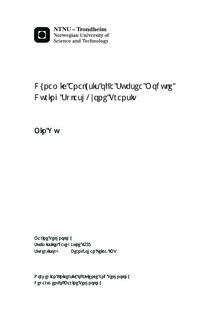Dynamic Analysis of a Subsea Module During Splash-zone Transit
Master thesis
Permanent lenke
http://hdl.handle.net/11250/238565Utgivelsesdato
2013Metadata
Vis full innførselSamlinger
- Institutt for marin teknikk [3432]
Sammendrag
This thesis carries out a research on the dynamic performance of the template during the lowing operation through splash-zone. During the lifting operation, especially under harsh environment, the waves, winds as well as the currents will leave significant influences on the template. Hence, to study how the template performed under such environmental conditions is the main purpose of this thesis. A brief introduction to the marine operation industry as well as the lifting operation is presented first. During the installation, template is exposed to the magnificent dynamic loads from the environment. So during the lifting process, the forces acting on the template as well as the displacement of the template should be inspected and controlled. Thus, the wave description and an introduction to the different dynamic loads due to the wave movement are performed. In addition, the methodology and the theory background of SIMA program is also included in this thesis. After building up the model of the lifting system in SIMA, the static and dynamic analysis of the lifting operation is performed. The results of the static and dynamic analysis are all listed in the thesis as figures or tables. The finding of the studies shows that the template experiences a significant drift in the wave induced direction for all sea-states. Besides, the dynamic load of the lifting lines can be more than twice than the static load. This will lead to a huge challenge to the capacity of the lifting wires. Additionally, the vertical motion of the template is sufficient large during the lifting operation and may lead to potential risk. Overall, the environmental conditions have magnificent influences on the lifting structures. In particular, lifting operations must not take place once the significant wave height exceeds an up-limitation. On the meantime, the lifting action needs to be paused if the wave peak period is approaching a critical value.
